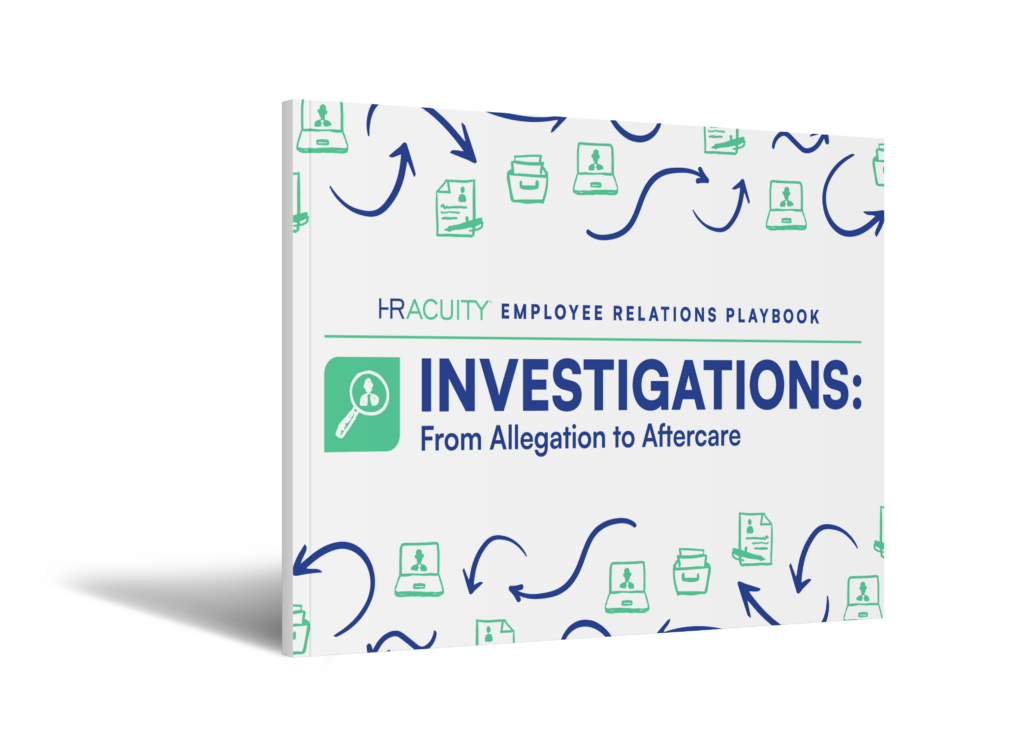So, you’re in the middle of a complicated workplace investigation and now it’s up to you to make sense of the situation. You have access to a pile of documents, statements from witnesses and some social media screenshots. But how do you know which evidence is applicable or how it’s going to help the case?
Learning the various types of evidence can help employee relations (ER) professionals confidently figure out what happened and examine the details for a fair outcome.
Let’s line up the evidence types and explore them further.
What Information Do You Have?
The types of evidence in a workplace investigation are divided into the following categories:
1. Direct Evidence
This is your primary source; for example, an employee’s first-hand account of a coworker’s misconduct. Leveraging direct evidence can help resolve conflicts swiftly and accurately to ultimately foster a healthier, more harmonious work environment.
2. Anecdotal Evidence
Employees may share personal experiences that shed light on workplace dynamics. This type of evidence typically highlights areas that may require attention and improvement to promote positive interactions among team members.
3. Demonstrative Evidence
Tangible items, such as photos and videos, can help substantiate a claim and provide a clearer understanding of the situation. This enables human resources (HR) teams to make informed decisions and form appropriate, confident responses.
4. Hearsay Evidence
Hearsay evidence refers to statements made by someone outside of the investigation. While hearsay statements are not be as reliable as direct evidence, they can still provide helpful context to support the investigation or guide the investigator as to where to dig deeper to validate the hearsay with something more direct.
5. Circumstantial Evidence
Circumstantial evidence provides proof that suggests a fact but doesn’t directly verify it. This type of evidence helps establish patterns or make connections between different pieces of information.
How Did the Information Come In?
Depending on how evidence is received, it is segmented into the following categories:
1. Documentary Evidence
Emails, memos, letters, contracts, policies, procedures and even social media posts or text messages are forms of documentary evidence. Written records help you piece together a timeline of events and provide context for how the situation might’ve played out. This allows for a more transparent investigative process to address employee concerns.
2. Physical Evidence
Any objects, equipment or any other items related to the incident or its aftermath can be invaluable to an HR investigation. These items paint a clearer picture of what happened which facilitates better communication with those involved.
3. Witness Testimony
This supporting evidence involves statements from employees, supervisors or third parties. Effective witness interviews are necessary to capture the whole story from different viewpoints, which in turn promotes trust and cooperation among team members.
4. Digital Evidence
Information found within computer and internet usage logs, electronic files, data storage devices and security camera footage can provide a treasure trove of evidence in an investigation.
How to Make the Most of Your Evidence
Now that we’ve covered the different evidence types, let’s talk about how to make the most of them. Consider these top tips to handle evidence in a workplace investigation:
1. Organize and preserve evidence like a pro.
Collect, safeguard and ensure confidentiality while staying compliant with legal requirements. This helps the investigator be more efficient and arrive at the most likely outcome.
2. Analyze and evaluate credibility.
It is important to thoroughly assess reliability and draw connections between different types of evidence to lead to fair resolutions and avoid errors.
3. Develop and follow a consistent investigation process.
Implement standardized investigative protocols for evidence collection and evaluation and train HR and ER professionals in effective investigation techniques. Workplace investigation guides come in handy to help you maintain a trustworthy process.
4. Keep it fair and impartial.
Fairness is essential to any investigation. Avoid any personal bias or preconceived notions and seek external assistance or expertise when needed.
5. Make informed actions based on the evidence.
Take your time to fully determine the outcomes of the investigation and implement appropriate actions or disciplinary measures.
6. Communication is key.
Open communication fosters understanding and helps to prevent misunderstandings. You’ll want to keep relevant parties informed and provide a clear explanation for the decisions and actions taken.
Download the Employee Relations Playbook
Everything you need to know from Allegation to Aftercare.

Navigating evidence in a workplace investigation can be a challenge, but it is essential to appropriately resolve conflicts and foster a healthy work environment. By understanding the various types of evidence and how to handle them, you will be able to effectively conduct workplace investigations and ultimately strengthen employee relations within your organization.
At HR Acuity, we understand the importance of evidence in workplace investigations. Our easy-to-use, industry-leading technology streamlines the collection and organization of evidence within workplace investigations. The platform’s robust case management features enable HR and ER professionals to efficiently analyze, evaluate and take informed actions based on that evidence.
To learn more about how you can better collect and evaluate evidence in workplace investigations, book a demo today.



